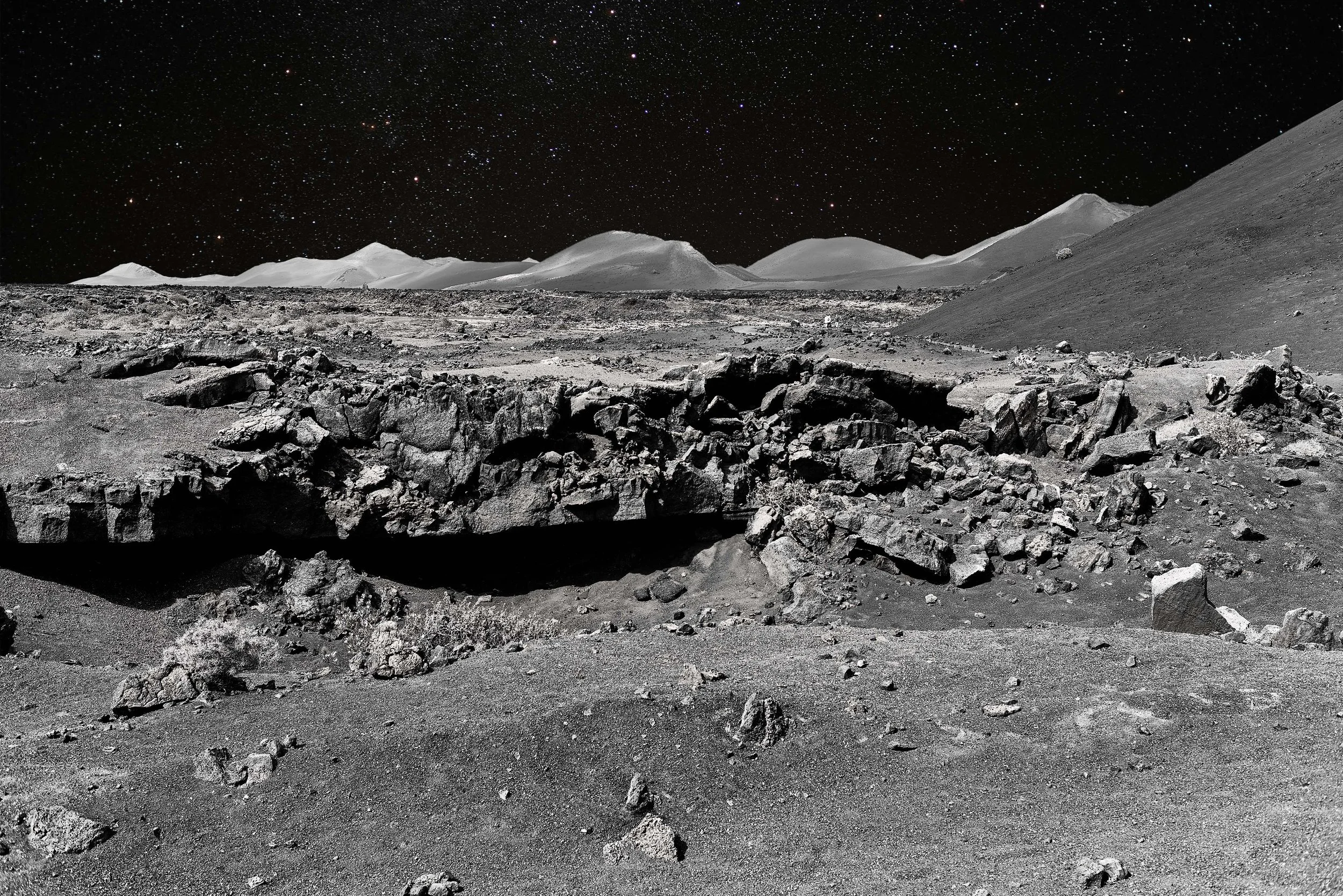F R O M T H E E A R T H T O T H E M O O N
From the Earth to Moon is a visual essay composed of 13 pictures at the crossroad between landscape photography and space exploration.
We are now in 2050. Thanks to the mastery of nuclear fusion, plasma engines have made space tourism possible at an affordable price. My wife and I decided to go to the moon for our honeymoon. This expression makes more sense to me now. A total of two weeks were needed to complete this trip. The first week was devoted to physical, mental, and technical preparation at the Boca Chica Launch Site (aka Starbase). The trip only lasted three hours aboard a state-of-the-art re-usable space ship. We then spent three days and two nights on the moon. We stayed three days in quarantine as a precautionary principle on our return on Earth. It has been shown that the lunar environment can promote the mutation of microorganisms in some instances. I took advantage of this moment to write this article and prepare my most beautiful shots for my Metagram.
We traveled in the footsteps of the pioneers of the Apollo missions with a lot of emotions. A dream came true. We were only 4 onboard: my wife, I, and the Space-X staff. The pilot, Michael Collins Jr, and the co-pilot Natalia Tereshkova. We would find the rest of the team on the various moon bases at our arrival. The plan was simple yet very efficient. We landed at the North of the Mare Imbrium near the Promontorium Laplace, where the LUNA-MI base was built. We spent the first "night" there. The next day we drove down to the south by the east side of the mare. We spent the second night in the LUNA-MC base & lodge on top of the Montes Carpatus. Finally, we drove up to the north by the west side to regain the launch pad. You can find the exact path on the map here below.If a picture is worth a thousand words, you have below approximately thirteen thousand words to describe the moon's beauty. Rima Mairan - 41° 36′ 0″ N, 43° 24′ 0″ W (41.6°, -43.4°)
Bianchini D (crater) - 47.6° N 35.8° W
This photograph of the Marius cave deserves its own explanation. It was discovered in 2021, thanks to images from the LROC (Lunar Reconnaissance Orbiter Camera). You can read the article detailing the discovery right here.
Caverns can offer enough space, protection against cosmic radiation and stable temperatures for astronaut bases or even sub-surface cities for the settlers. This cave is maybe our future neighborhood.The orange light is artificial and here only for aesthetic reasons. The white light is from our companion robot.Back to the present
I always wondered how I would photograph lunar landscapes if space tourism became affordable. To make this series, I photographed different landscapes of the Canary Islands. I then merged the sky with a photograph taken at the same place at night to make the stars appear. This idea came to me in 2017 during my first trip to the Canary. I was impressed by the diversity and beauty of the landscapes, which can mimic the moon. This project took me five years to complete.
These photos are not black and white. The printing with the use of high-quality inks makes it possible to visualize the colors of the stars and the tints of the lunar ground. Mainly orange and green, these colors are explained by the presence of olivine and iron oxide.












